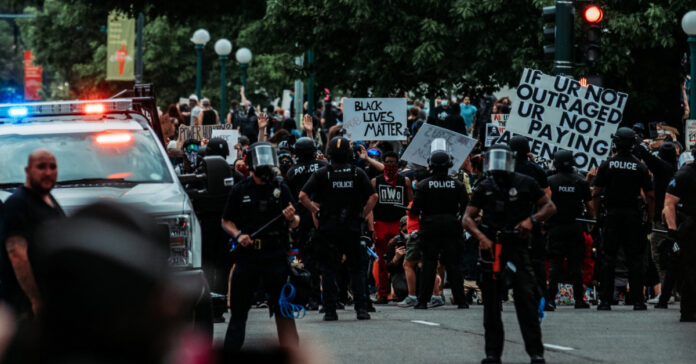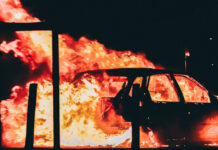Closing statements at the Derek Chauvin trial concluded Monday, and the outcome is in the hands of the jury. No one knows whether they will reach a verdict in hours or days, but take the possibility of civil unrest into account when planning your week.
Some predict that Chauvin will be found not guilty of second or third degree murder in the death of George Floyd because Floyd’s heart disease and use of Fentanyl contributed to the death. While a manslaughter conviction is possible, it or a “not guilty” verdict might cause anger and civil unrest, culminating in destructive riots and looting.
If you live or work in a city that experienced violent protests and riots last year, you should prepare for it again. That means avoid areas that are prone to civil unrest.
Minneapolis is already preparing by erecting barricades and calling up the National Guard.
How to Prepare for Riots
As I said in a post more than a year ago, the best way to prepare for civil unrest and rioting is to avoid areas where it is likely to break out. That remains good advice. Here are some examples of things you can do to avoid being stuck in a protest or riot:
- If you work in downtown Atlanta, for example, and hear that the verdict is going to be announced at 3 p.m., come up with an excuse to leave work at 2:30 p.m. Get out of the target zone.
- If you live or work in another city center that frequently sees rioting and tear gas or pepper spray, consider buying a gas mask or respirator. Otherwise, rinsing with large quantities of water can help you decontaminate yourself should you get exposed. If sprayed, avoid rubbing your eyes or touching your face. This can transmit pepper spray to those sensitive areas.
- If you live in the city, keep in mind that street violence may limit your ability to move about. Stock up on food and other necessities ahead of time. Pepare to spend a few days at home. After the COVID-19 lockdowns, that should be easy.
- If you don’t live in the city, don’t make any plans to visit until the verdict is known and any resulting civil unrest is over.
- Stay home at night. Violence often breaks out after dark when the true “peaceful protesters” go home and those that are left have something else in mind.
- If you have to travel and you have a concealed carry license, carry heavy. I’d go with two guns and a minimum of two magazines, with more spare mags in the car. No one wants to shoot anyone, but when they are smashing your windows and dragging you outside for a beating, you may wish you had a way to stop the attack.
Caught in a Riot
If you are on foot and caught in an area with a riot, casually work your way to the outside of the crowd and then duck into the subway or go into a building (if you can find one unlocked) to escape. If protestors are marching towards something, march slower than the crowd and get left behind. Then break off and get out of there. If you don’t have wheels, get far enough away that you can safely call an Uber.
If you are at work or live in a building above a riot, don’ leave the building and don’t open your door. Stay there until the violence is over.
If you are driving a vehicle and a riot breaks out in your location or you unexpected drivel into a protest or riot (which you should not if you follow our first pieces of advice), keep in mind also that your car is an effective weapon if you are attacked. There are plenty of videos on Twitter of people escaping a mass of rioters by using their car to push protesters out of the way and knockdown attackers. If rioters jump on your car, accelerate and then jam on the breaks, throwing them off. If you cannot accelerate out of the problem, accelerate through it but expect to be chased by angry rioters and possibly stopped by the police. Still, better to be alive and under arrested for actions you took in self-defense than to wake up in the hospital after being beaten half to death. Don’t panic, and don’t get angry and prolong the confrontation, just get out of there.
If protestors block a highway up ahead, don’t stop too close to the car in front of you. Leave yourself some room to maneuver, at least back and forth. Your one or two-ton vehicle is a serious battering ram when compared to a human body.
News vs Reality
Monitor local news and Twitter for news of local protests and riots. The cable outlets will cover any unrest in large, prominent cities, but your local news stations should carry local coverage.
If there is a riot—and there were riots in multiple cities last week—you’ll see all sorts of media coverage. I find it useful to remember that riots usually take up a few square blocks in a country that is 3.8 million square miles. Just because there is violence and unrest in a few cities, or even a few dozen cities, that is a tiny portion of the country.








